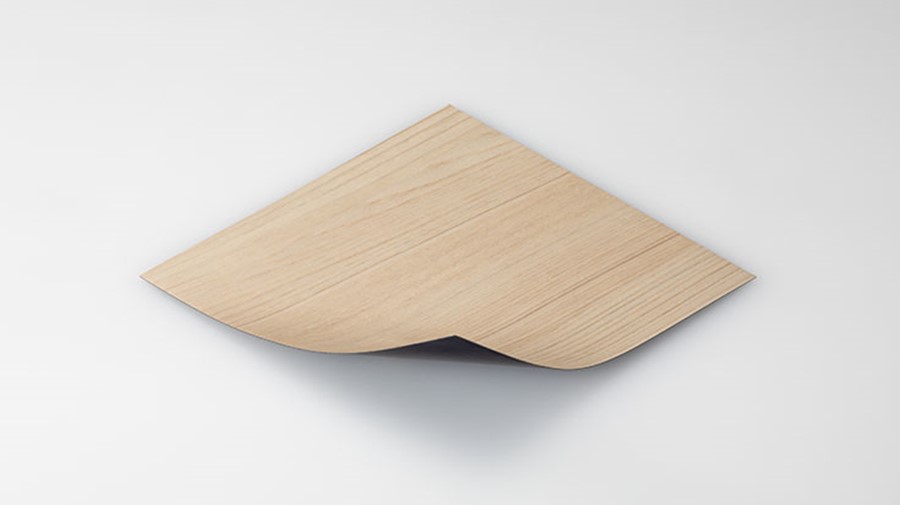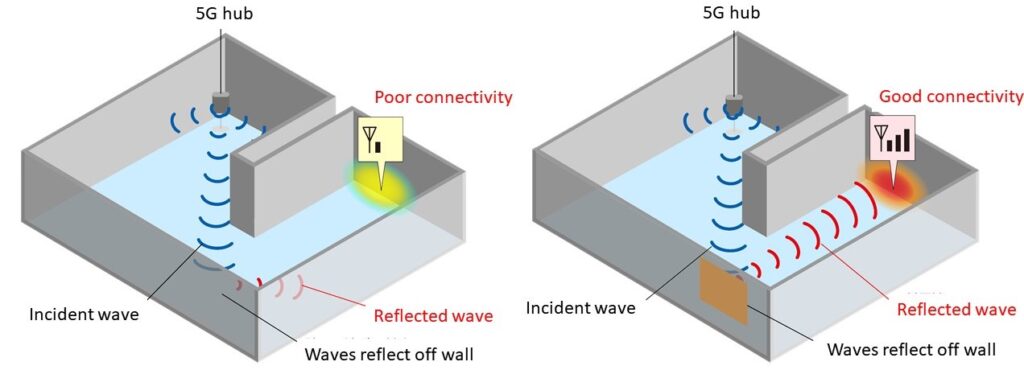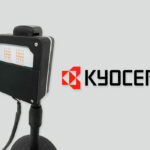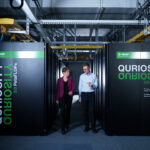ASIA ELECTRONICS INDUSTRYYOUR WINDOW TO SMART MANUFACTURING
Toppan Develops Flexible Millimeter-Band Reflector
Toppan Inc., a global leader in communication, security, packaging, décor materials, and electronics solutions, has developed a product that allows users to control the reflection angle of radio waves in the 1–10 mm wavelength band used in 5G mobile communications.
The product is a lightweight, flexible sheet with metasurface1 structure that can reflect 5G millimeter-band radio waves in specific directions, thereby enabling high-speed, multi-connection communications in radio dead zones. The surface of the sheet can also be printed with woodgrain, marble, and other designs, enabling use as wallpaper in offices, factory buildings, and other interior spaces.
“This product can improve the user experience and facilitate a range of services by making it possible for radio wave signals to reach locations where previously connectivity was impaired,” said Jin Endo, Managing Executive Officer of R&D Strategy and Business Development at Toppan, “With high-quality designs, it can also blend seamlessly into interiors, delivering an unobtrusive solution to help ensure secure, uninterrupted communication via next-generation networks.”
The new reflector sheet will be exhibited in the Zeta Alliance booth (West Hall, booth 3-12) at the COMNEXT Next Generation Communication Technology & Solutions Expo to be held at Tokyo Big Sight from June 28 to June 30.

Background
The millimeter wavelength band utilized in 5G communications (corresponding to the 28 GHz band) is capable of high-speed, high-capacity, and high-quality transmission of images and other information. Its use is expected to expand to a variety of digital services, including remote monitoring, real-time high-definition video streaming, and video conferencing. However, millimeter-band radio waves are highly directional and have poor obstacle penetrability, which results in the creation of so-called “dead zones” and consequently causes decreased speeds, delays, and other transmission quality issues. In response, telecommunications companies have begun installing more 5G base and relay stations and implementing more experimental measures, including the installation of radio wave reflectors. However, reflectors currently in use are made of thick, heavy pieces of metal that require strong walls for installation. Being made of metal they are also unattractive and must be installed at specific angles to allow radio waves to be reflected in the desired direction, meaning they are lacking in terms of both convenience and safety.

In order to address these issues, Toppan has developed a lightweight, flexible millimeter-band reflector with a metasurface structure capable of controlling radio waves. This has been achieved by utilizing design technologies employing electromagnetic field simulation and high-definition etching technologies, both of which Toppan has cultivated in the production of electronic components.
The product’s metasurface structure is arranged in a metallic pattern capable of controlling radio wave reflection phase change, allowing for radio waves in the 1–10 mm band to be reflected in any direction. Installing the reflector in a room can improve connectivity by ensuring millimeter-band waves are delivered to dead zones. The flexible sheet is also lightweight and can be given woodgrain, marble, and other designs, making it well-suited to use on walls and ceilings inside office spaces and factory buildings.
Going forward, Toppan will develop products for outdoor-use and for future 6G mobile communications. Radio dead zones will be eliminated not only for 5G applications but for 6G as well, thereby ensuring the creation of ultra-high-speed, ultra-low latency, multi-connection data communication environments that are both safe and secure.

Features
・ Metasurface structure allows for the control of radio wave reflection angle
The metasurface structure allows radio waves of any incidence angle to be reflected in any direction, removing the need to install a reflector at a particular angle to deliver radio waves in the desired direction. It also means that there is more freedom in deciding where in a room to install the reflector.
・ Thin, lightweight, and flexible with design quality suitable for interiors
The reflector is as thin, light, and flexible as a décor sheet used for interiors. A diverse range of designs, including woodgrain and marble, can be selected and applied, making it a natural fit for any room.
・ Optimized design increases reflectivity to eliminate dead zones
The effectiveness of the metasurface structure has been maximized using electromagnetic field simulations and optimized design methods, enabling radio waves to be reflected in the desired direction and efficiently delivering a signal into dead zones.
Future
Toppan will collaborate with other companies and organizations working in 5G and related fields to establish spatial design technologies, such as radio-wave-related simulation and radio wave measurement, by using radio wave reflectors, absorbers, and other lightweight, thin, decorative materials that can improve communication environments. Toppan will also provide 5G users with wireless area solutions and will continue to work towards ensuring safe and secure high-speed communication environments as the use of 5G networks expands.
1 Metasurfaces are a type of metamaterial, an artificial material in which a structure smaller than a specific wavelength is arranged in repeated patterns to allow for control of electric permittivity and magnetic permeability. In metasurfaces, the structures are arranged into two-dimensional patterns within the artificial surface.




